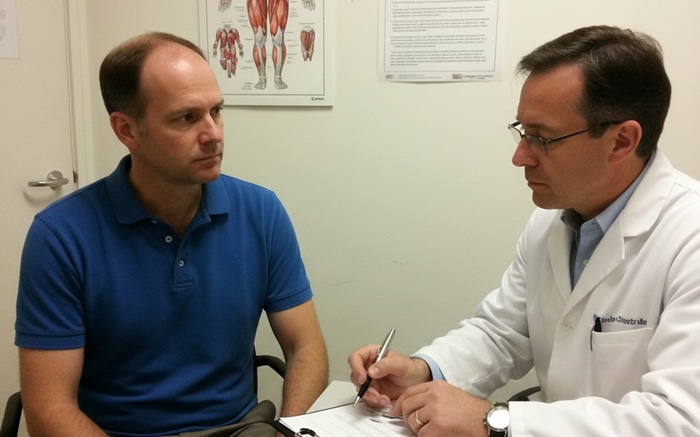Arthritis, chronic pain, kidney disease, and even cancer. Regenerative medicine is making us rethink how we treat these conditions and how patients can truly heal.
What happens when an innovation has the power to redefine the entire healthcare system? Because regenerative medicine challenges big pharma, raises questions about insurance coverage, and even pushes the FDA to rethink its regulations.
For millions of people living with chronic pain or long-term illness, regenerative therapies like stem cells, PRP, and PRF are already changing lives. The results are real, though we are still learning a lot along the way.
I’m a surgeon, and I’ve always been fascinated by how the body repairs itself. But as someone born with a congenital heart condition, regenerative medicine is also deeply personal to me.
After more than 20 years in practice, I’ve studied, researched, and seen these breakthroughs up close. Today, I want to share with you much of what I learned about it: what regenerative medicine really is, the benefits it brings, and where it’s headed.
Let’s dive in.
What is Regenerative Medicine?
Maybe you’ve seen the headlines: “the revolution of stem cells” or “unlocking your body’s healing powers.” Sounds exciting, but it also makes you wonder if these treatments and cures are really for real.
Behind those headlines are actual therapies you’ve probably heard of, like PRP, PRF, exosomes, and stem cells. All of these fall under regenerative medicine, and I’ll explain them here.
Regenerative medicine is a new approach to care where your doctor helps your body heal itself using your own living tissue. In short, we use a patient’s own cells and tissue to repair, regenerate, and improve health.
Here’s a quick overview of the main regenerative medicine treatments:
- Stem cell therapy: Uses your body’s own master cells to regenerate tissue and treat conditions like arthritis, injuries, and paralysis. It also shows promising potential in cancer research.
- Exosome therapy: Small messengers released by cells that carry proteins and genetic material to promote repair and reduce inflammation.
- PRP and PRF: Concentrates made from your own blood. They boost healing, reduce chronic joint pain, and support skin rejuvenation.
- Tissue engineering: The science of growing, repairing, or replacing parts of the body using cells, biomaterials, and bioactive molecules.
What do all of these regenerative therapies have in common? They come directly from living human tissue, either from your own body or a donor.
For the sake of safety, FDA approvals, and what I do in my own practice, I’ll focus mainly on autologous treatments. That means regenerative medicine that uses your own cells and tissues.
Now let’s get into what regenerative medicine can actually treat, and how it’s already improving lives.
Key Applications: Who Can Benefit?
If the idea of healing with your own cells sounds fascinating to doctors, imagine what it means for patients. People living with arthritis, paralysis, or chronic pain now have real hope for treatments that go beyond just managing symptoms.
Here is something I explained my previous post about traditional vs regenerative medicine:
In traditional medicine, doctors prescribe drugs or procedures to control the problem. Arthritis? You get ibuprofen or corticosteroids. Hair loss? Minoxidil or finasteride. Heart disease? Beta blockers, stents, maybe surgery.
Regenerative medicine takes a different path. Instead of drugs created in a lab, we use your own cells and tissues to help your body heal naturally. For arthritis, stem cells can support joint repair. For hair loss, a simple blood draw for PRP can stimulate growth. Even for heart conditions, stem cells and tissue engineering are showing remarkable promise.
Here’s how that translates across some of the most exciting areas of care:
Orthopedics & Sports Medicine
In the US, about 25 percent of adults live with chronic pain. Much of this is tied to back problems, joint injuries, or arthritis. These are areas where regenerative therapies can make a huge difference.
In sports medicine, treatments like PRP and stem cells have become game-changers. They help athletes recover faster and also improve outcomes for injuries that used to have limited options. Think about the most severe sports injuries, like ACL tears, meniscus damage, or even slow-healing fractures.
Chronic Disease Management
Regenerative medicine can regenerate tissue and, potentially, whole organs, so the possibilities here are really promising. Research is underway for heart disease, cancer, diabetes, kidney failure, and even neurological and mental health conditions.
Take leukemia, for example. While there’s no cure yet, stem cell therapies have shown unprecedented potential to reset and rebuild the blood system. It’s the kind of shift that could redefine chronic disease treatment in the future.
There are several documented real cases today. The way I see it, it’s just a matter of time so we can see safe regenerative medicine protocols for this.
Anti-Aging & Aesthetics
This is the field where regenerative medicine has already made its safest and fastest progress. Today, we use therapies like PRP and PRF to rejuvenate skin, boost collagen, increase elastin, and improve wound healing.
We are moving away from f adding chemicals the body doesn’t naturally make. Instead, regenerative aesthetics focuses on encouraging the body to create its own building blocks for repair and renewal. The result is healthier, more natural-looking skin and overall wellness.
The Science Behind the Magic

Earlier I said regenerative medicine is reshaping healthcare worldwide. Research is happening everywhere, from Europe to Asia. Here in the US, regulations are strict but evolving, with the FDA adapting as science proves what’s safe, effective, and life-changing.
When it comes to the most widely used cellular therapies, there are three that stand out: stem cells, PRP, and PRF. In short, stem cells are about regenerating new tissue, while PRP and PRF are more about accelerating the body’s natural healing.
Let me explain what each of these therapies are, and how I use them in my own practice.
Stem Cell Therapy
Stem cells are your body’s master cells. They have the unique ability to develop into specialized cells; like muscle, bone, cartilage, or even nerve cells. That means stem cell therapy can actually help regenerate damaged tissue in different organs or joints.
What can we do with stem cells? Repair a torn meniscus, restore cartilage in the knee, for example. In the future, regrowing healthy organs for patients battling cancer. It’s no surprise the medical community is watching this field so closely.
For now, the FDA allows us to use autologous stem cells—that means using your own cells, not donor cells—for pain management. At True Contour, that’s the approach to regenerative medicine we brought to Scottdale.
I’ve worked with bone marrow stem cells in the past, but today I mainly use adipose-derived stem cells from a patient’s own fat tissue. Once we take these, we need to grow and integrate for a couple of months, and they reinject them into the healing area like knees, joints, or the spine.
It’s really a short time to wait, if you think about it. And especially for patients dealing with chronic pain or sports injuries, the results can be life-changing.
PRP and PRF
As I explained in my PRP vs PRF post, both come from a simple blood draw, and both work by concentrating the healing factors already in your bloodstream. But they are definitely not the same.
PRP (Platelet-Rich Plasma) is a liquid concentrate made by spinning blood at high speeds with anticoagulants. It’s rich in growth factors and platelets that can be reinjected where healing is needed—whether that’s a joint, a tendon, or even the scalp for hair restoration.
On the other hand, PRF (Platelet-Rich Fibrin) uses a slower spin without anticoagulants, creating a fibrin matrix that releases growth factors more gradually. Because of this, PRF tends to support longer-term recovery. It’s become popular in facial aesthetics, dental surgery, and wound care, where boosting collagen and volume is essential
The main difference? PRP offers a quicker release for faster recovery, while PRF provides a slower, steadier effect. Both are powerful tools for healing, rejuvenation, and anti-aging treatments.
The Promise & The Reality: What’s Next?
I know this all sounds like a lot. Healing arthritis for good or even finding cures for cancer can feel almost too good to believe. The truth is, there’s still much we don’t fully understand. But the research is moving in the right direction.
Here’s the challenge: results. In some studies, 8 out of 10 patients improve gradually over time, while 2 do not. Why does it work beautifully for some and not for others? That’s where we need more answers, and better predictability.
Still, when you see an oncology patient respond to stem cell therapy in ways traditional medicine couldn’t achieve, you can’t help but push forward. Every success story becomes a signal to keep learning and refining.
One thing is clear: stem cells and other regenerative therapies can outperform many pharmaceuticals, especially in pain management and chronic conditions. It’s about using these new procedures with professional care and precision.
For now, healthcare still leans on medications and drugs that can be mass produced. Stem cells and PRP, on the other hand, are personalized therapies. You can’t put them on a factory line. That’s part of why adoption has been slower, as information is still catching up and many companies aren’t eager to embrace that shift.
But make no mistake: regenerative medicine isn’t a passing trend. It’s a movement that’s reshaping how we think about healing, disease, and even aging.
Experience A Healthier, More Active Future
Even though regenerative medicine can feel like magic, I wouldn’t describe it that way. It’s work. Your work and mine, together.
For me, regenerative medicine is something I owe to my patients, and to myself. I’m not here to say “go for regenerative medicine” just because it’s trending. I don’t believe in quick fixes. I believe in building real treatment plans.
Here at True Contour, sometimes that means using your own cells. Sometimes it’s exosomes, sometimes it’s PRP. And always, it’s the basics: nutrition, hydration, sleep, and movement.
Maybe it’s for treating arthritis, a kidney condition, joint pain, or skin rejuvenation. For all these, progress takes time. Three months is considered quick. A year is common. But the results are worth the wait. Nothing in medicine is 100 percent, but if you commit and do the work, your odds improve every single week.
I’ve shared an overview of how regenerative medicine can help you or someone you love. Chances are you now have more questions, and that’s a good thing.If I’m right, then this is the perfect time to schedule a consultation with us. That’s how we start building your path to healing, and how we keep you there.
